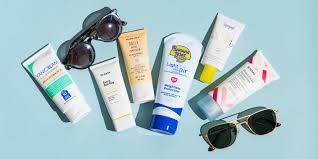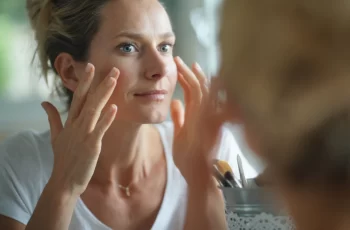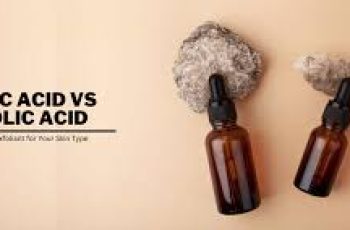
How To Buy a Safe, Effective Sunscreen
Sunscreens are substances designed to protect your skin from ultraviolet (UV) radiation emitted by the sun. They absorb, reflect, and scatter UV protons, which protects your skin and keeps it from absorbing UV radiation.1
Because UV radiation can damage your skin and cause cancer, wearing sunscreen daily is one of the best ways to reduce your risk of skin cancer. Taking other measures like seeking shade outdoors and wearing protective clothing—including a hat and sunglasses—can help fully protect your skin from the sun and reduce your risk further.2
Sunscreens also help prevent sunburn and reduce the likelihood of premature aging.2 However, it’s important to choose the right sunscreen to keep your skin protected. Consider the factors below when buying a sunscreen to determine the best kind for your needs and skin type.
SPF (Sun Protection Factor)
When selecting a sunscreen, one of the first things you need to consider is the sun protection factor (SPF). This number represents how much UV radiation is needed to produce a sunburn on protected skin (skin with sunscreen) compared to how much UV radiation is needed to produce a sunburn on unprotected skin.3
The American Academy of Dermatology (AAD) recommends selecting a sunscreen with SPF 30 or higher, which blocks 97% of the sun’s UVB rays.24 However, it’s important to understand what this number means because, in some cases, you may need a higher SPF.
Although most people believe SPF allows them to stay in the sun longer, SPF is not actually related to time in the sun. Instead, it refers to the amount of solar exposure needed to redden your skin when you’re wearing it.3
When wearing an SPF 30 sunscreen, it would ideally take you 30 times longer to burn than if you weren’t wearing sunscreen. However, you also need to consider how often you reapply, the color of your skin, and the time of day, as these factors can play a role in sunburn risk.5
People with certain skin conditions or who are at a higher risk of skin cancer need to select a higher SPF. They also need to reapply just as often as people wearing SPF 30. Sometimes, wearing higher SPFs gives a false sense of security, which can prompt someone to stay out in the sun too long or not reapply as often as they should.5 It’s also important to remember that no sunscreen can block 100% of the sun’s UVB rays.4
Sunscreen vs. Sunblock: What’s the Difference, and Which Is Better?
Formula or Type
The type of sunscreen you purchase often comes down to personal choice. Look for a formula type that you are willing to wear frequently. Options often include lotions, creams, gels, sprays, ointments, and wax sticks.4
Sunscreens that contain insect repellants are not recommended by the AAD. Instead, they suggest purchasing two different products and applying them separately—though insect repellants should be used sparingly.4
Different formulas or types may work better than others for different skin types or areas. For instance, a cream-based sunscreen may work better for dry skin while a gel-based sunscreen may work better for oily skin. A stick or wax sunscreen may be easier to use around the eyes and spray sunscreens can be easier to apply on kids.4
Ingredients
You will also want to consider the ingredients in a sunscreen, especially if you have a health condition, sensitive skin, or allergies to certain ingredients.
For instance, the ingredients avobenzone and octocrylene, which are often in chemical sunscreens, can cause allergic reactions such as contact dermatitis. Fragrances, alcohols, preservatives, and other ingredients can also cause reactions. If you’re unsure about a sunscreen, try it on a small patch of skin for a few days to see how you respond.6
There also is some concern over sunscreen ingredients lingering in the bloodstream, impacting hormones, and disrupting coral reefs. A report by the National Academy of Sciences (NAS) urges the Environmental Protection Agency (EPA) to determine the impact of sunscreens on marine life and ecosystems.7 The AAD also supports these investigations, particularly urging for research into how sunscreen can impact human health.4
Some research shows sunscreen ingredients are absorbed into the bloodstream and can remain there for extended periods of time. One study found that six ingredients—oxybenzone, avobenzone, octocrylene, homosalate, octisalate, and octinoxate—were absorbed into the bloodstream after one use and were at levels in the blood that surpassed the U.S. Food and Drug Administration’s (FDA) threshold.8
However, the FDA maintains that absorption does not equate to risk and urges people to continue using sunscreens—though studies are ongoing.9 If you’re concerned about absorption, you may want to opt for a mineral sunscreen and be sure to read the label for any known allergies you have.
Broad-Spectrum Coverage
The AAD recommends a broad-spectrum sunscreen, which can protect you from both UVA and UVB rays. UVA rays are sometimes called “aging rays” because they can cause premature skin aging, increase the number of wrinkles you have, and lead to age spots. UVA rays also have the ability to pass through window glass in an office building or your car.4
UVB rays, sometimes called “burning rays,” are the primary cause of sunburn. Though they can be blocked by window glass, you still need protection from these types of rays. A broad-spectrum sunscreen will provide protection from both types of rays.4
Water Resistance
When looking for a sunscreen, it’s important to select one that is water resistant. These sunscreens are designed to stay on your skin longer when you’re in or around water or if you’re sweating or working out in the heat.4
However, no sunscreen is completely waterproof or sweat-proof. If you go swimming or you’re exercising with a water-resistant sunscreen, you will still need to reapply as soon as you are done.4 Also, make sure you reapply every two hours, even if you’re not swimming.
Sunscreen manufacturers are not allowed to use the terms waterproof or sweat-proof because these terms can be confusing or misleading for consumers.4 If you see a product that makes these claims, avoid buying the product and consider reporting the manufacturer to the FDA.
Mineral vs Chemical
Active ingredients are what separates mineral sunscreens from chemical sunscreens. For instance, mineral sunscreens (or physical sunscreens) primarily contain titanium dioxide, zinc oxide. or both. Typically, dermatologists recommend people with sensitive skin use mineral sunscreens.4
If your sunscreen does not contain titanium dioxide or zinc oxide, you have a chemical sunscreen. However, it is possible to have a hybrid sunscreen that contains both chemicals as well as titanium dioxide and zinc oxide. The best way to know for sure is to read the list of active ingredients.4
Keep in mind that both mineral and chemical sunscreens are effective sunscreens.4 Just be sure your sunscreen is SPF 30 or higher, is water-resistant, and is broad spectrum.
Skin Type
Regardless of your skin type, there are sunscreen products that can protect your skin without exacerbating any existing skin concerns. Some sunscreens are specially formulated to help with a particular skin type while protecting you from the sun’s harmful rays. The key is to read the label and confirm your selection fits your skin type.
If you have dry skin, you may want a sunscreen that has added moisturizers. If you have oily or acne-prone skin, you may find that non-comedogenic and oil-free sunscreens work best.10
People with sensitive skin should opt for a product that is fragrance-free and hypoallergenic. You can also find sunscreens specifically designed for mature skin.10
Skin Tone
Finally, when selecting a sunscreen, consider your skin tone. While all sunscreens should be broad-spectrum, water resistant, and have an SPF of 30 or higher, some factors may be more important to consider for different skin tones.
For instance, if you have fair skin, sensitive skin, or underlying skin issues, your skin can burn much more quickly than darker-toned skin. In this case, wearing a higher SPF may be a better choice for you.
Research shows protection against UVB rays is particularly important for people with light skin, as they are at a higher risk of sunburn as well as DNA damage and skin cancer. People with very light skin tones may want to choose a sunscreen with an SPF of 50 or higher.11
Darker skin may be naturally better protected against UVB rays, but it’s more prone to hyperpigmentation, which can result from UVA rays. For this reason, people with darker skin tones should also regularly use a broad-spectrum sunscreen with an SPF 30 to prevent photoaging and pigmentation.11
Also, since UVA rays can penetrate glass, your skin may still be exposed to sun damage indoors. Make sure to wear your sunscreen regularly, especially if you sit by a window in your office or drive for long periods.11
Tips for Applying Sunscreen
Once you have selected the best sunscreen for your skin, the key to making sure it’s effective is to wear it consistently and apply it correctly. Here are some tips for applying sunscreen to ensure you get the most protection you can:
Apply sunscreen before you go outside. Apply sunscreen at least 15 minutes before you head into the sun. If you wait until you are outside, your skin is already exposed and can burn.12
Make sure you use enough. Most people only apply 25-50% of the recommended amount of sunscreen. To fully cover your body, you need about one ounce of sunscreen—or enough to fill a shot glass.13
Use sunscreen on all exposed skin. Apply sunscreen on every area of skin that is not covered by clothing. Don’t forget the tops of your feet, the part in your hair, and your ears, neck, and lips.12
Reapply every two hours. Experts suggest reapplying sunscreen every two hours or sooner if you are sweating, working out, or swimming. However, only about one-third of Americans reapply their sunscreen as recommended.13
Apply sunscreen every day regardless of the weather. Many people opt to go without sunscreen on cloudy days, but the sun’s rays can still get through the clouds. As much as 80% of the sun’s UV rays can penetrate your skin on cloudy days.13
Cover your skin evenly. If you are using a spray sunscreen, make sure you spray until your skin glistens. Then, take a minute to rub the sunscreen into your skin. (Also, avoid spraying around your mouth or inhaling sunscreen.)4
Pay attention to the expiration date. Sunscreens can expire, usually about three years after they are purchased, which can make them less effective. Before using a sunscreen you already have on hand, check the label to ensure it’s still good.4
A Quick Review
Sunscreens are designed to prevent sunburns, reduce the likelihood of skin cancer, and decrease premature aging. When buying a new sunscreen, look for a broad-spectrum, water-resistant sunscreen with an SPF of 30 or higher.
You may also want to consider the type of sunscreen, your skin type, and the ingredients. Taking into account your preference and comfort can help ensure you’ll wear the sunscreen consistently. If you have questions about how to choose the best sunscreen for you, talk to a healthcare provider such as a board-certified dermatologist.


